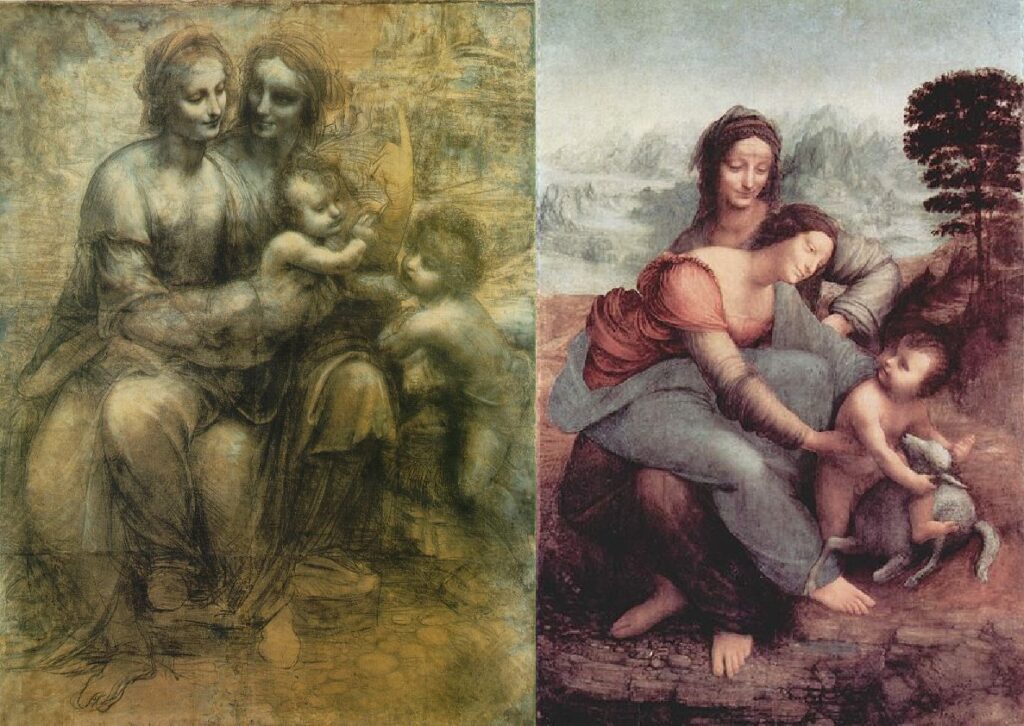
C.G. Jung and the Shadow Archetype highlight the concept of the ‘shadow,’ which represents an essential part of our unconscious, comprising disowned, shameful, or rejected aspects of ourselves that are not acceptable to our ‘persona.
Unwanted thoughts and feelings persist as powerful, dynamic complexes that accompany us wherever we go, like a dark companion that follows our every step—just like a shadow.
Much of the time, we manage to ignore it, but it has an unsettling way of resurfacing, often manifesting as xenophobic aggression toward others.
Jung wrote:
“Unfortunately there can be no doubt that man is, on the whole, less good than he imagines himself or wants to be. Everyone carries a shadow, and the less it is embodied in the individual’s conscious life, the blacker and denser it is. At all counts, it forms an unconscious snag, thwarting our most well-meant intentions.”
Coining the Term “Shadow”
Carl Gustav Jung coined the term “shadow,” associating it with our own antisocial complex. He felt that the term “shadow” was appropriate for the disowned sub-personality, as it represents something “shady,” hidden away in the dark lumber-room of the unconscious.
In dreams, the shadow often appears as a sinister or threatening figure of the same sex as the dreamer and is frequently portrayed as a member of a different nation, color, or race. There is usually something alien or hostile about it, giving rise to powerful feelings of distrust, anger, or fear.
Jung created the term “shadow” based on his dream:
“I had a dream which both frightened and encouraged me. It was night in some unknown place, and I was making slow and painful headway against a mighty wind. Dense fog was flying along everywhere. I had my hands cupped around a tiny light which threatened to go out at any moment. Everything depended on my keeping this little light alive.
Suddenly I had the feeling that something was coming up behind me. I looked back, and saw a gigantic black figure following me. But at the same moment I was conscious, in spite of my terror, that I must keep my little light going through night and wind, regardless of all dangers.
When I awoke I realized at once that the figure was a “specter of the Brocken,” my own shadow on the swirling mists, brought into being by the little light I was carrying. I knew, too, that this little light was my consciousness, the only light I have. My own understanding is the sole treasure I possess, and the greatest. Though infinitely small and fragile in comparison with the powers of darkness, it is still a light, my only light.”C.G. Jung. “Memories, Dreams, Reflections”
Shadow’s Archetypal Nature

C.G. Jung and the shadow archetype describe how the shadow is a complex a cluster of traits bound together by common affects which, like all complexes, has an archetypal core. From early childhood, individuals absorb implicit and explicit messages about what is acceptable in their emotions and behaviors. Qualities and impulses deemed unacceptable are pushed into the shadow, shaping long-term attitudes toward these disowned parts. As Carl Gustav Jung the shadow archetype reflects the hidden self that society often rejects. In Jungian psychology, the archetype of shadow represents these denied qualities, and the more negatively parents and culture view them, the more hostile individuals may become toward those aspects of themselves.
The biological importance of the shadow is evident in its manifestation across all social species. Detecting the enemy is crucial for an individual’s survival, as is the ability to distinguish between friend and foe from the earliest possible age. Thus, the shadow is one of the most significant archetypes.
Shadow. The Archetype of Enemy
The core atributes of the shadow is the archetype of the Enemy, the Predator, or the Evil Strange. There are two important sources of the complex: cultural and familial repression.
The influence of shadow becomes apparent during the first year of life. Just as the infant will show delight at being approached by its mother, it will also show signs of wariness and withdrawal when approached by a stranger. By the second year, this xenophobic propensity has ripened into expressions of full-blown fear and hostility. Both attachment and xenophobia are evidently the product of innate dispositions because they are apparent in all infants wherever they are born and under whatever circumstances they are brought up. These universal patterns reflect the essence of Jungian archetypes, with fear and attachment being early examples of inherited psychological tendencies. In this way, the study of Carl Jung archetypes helps explain how such instinctive behaviors shape personality development from the earliest stages of life.
“Everyone carries a shadow, and the less it is embodied in the individual’s conscious life, the blacker and denser it is. If an inferiority is conscious, one always has a chance to correct it. Furthermore, it is constantly in contact with other interests, so that it is continually subjected to modifications. But if it is repressed and isolated from consciousness, it never gets corrected, and is liable to burst forth suddenly in a moment of unawareness. At all counts, it forms an unconscious snag, thwarting our most well-meant intentions”
C.G. Jung, Collected Works 11, p. 76, para. 131
Personal and Collective Shadow
The shadow can be understood in two dimensions: personal and collective. The personal shadow includes individual experiences and traits that are unique to each person, often perceived as undesirable or unacceptable. Beneath this lies the collective shadow, which consists of the darker aspects of society and culture, encompassing behaviors and practices that are collectively disowned or deemed unacceptable.
The projection of the collective shadow materialized in the figure of the Devil or witches. The collective shadow is inborn and present in every society shering the same languaed, country, religion or culture. The collective shadow creatts in every meber of such group feelings of conscious or unconscious hatred against the out-group, leading to dehumanization, crime and wars.
Projection of the Shadow
The shadow is most often encountered through projection—a psychological mechanism in which individuals attribute their own unacceptable qualities to others, thereby defending themselves against recognizing these traits within themselves. For example, if someone frequently notices and harshly judges greed in others, it may indicate an unacknowledged relationship with greed within themselves. Recognizing these projections can lead to profound personal and collective insights while reducing judgmental attitudes toward others.
Shadow projection, however, poses a significant threat to social and international peace. It allows individuals and groups to dehumanize those they perceive as enemies, turning them into devils or vermin whom they feel justified in hating, persecuting, or even exterminating.
Unscrupulous leaders often exploit this psychological mechanism of shadow projection on a large scale. Adolf Hitler, for instance, repeatedly described Jews as “Untermenschen” (subhumans). Through his skillful propaganda machine, he incited enough Germans to project their shadow onto the Jewish population, ultimately facilitating the Holocaust. This same psychological process underlies all pogroms, ethnic cleansing, and wars, as it enables entire societies to justify acts of violence against perceived outsiders.
The Shadow in Culture
Cultural influences shape everything, politically, this includes views about groups seen as threats to one’s own group (such as a nation or tribe), and theologically, which includes ideas about evil (like Satan, the Devil, or Hell). Inevitably, the shadow develops qualities opposite to the “sugar-coated” characteristics of the persona.
The coexistence of these two sharply contrasting personalities within a single individual is as evident in literature as it is in real life. Robert Louis Stevenson’s novel, Strange Case of Dr. Jekyll and Mr. Hyde, portrays the same man as a respectable physician at times and a monstrous figure at others. Stevenson was long fascinated by the idea that human personalities reflect the interplay between good and evil. Other examples include popular TV personalities who appear compassionate and warm on screen but turn into hysterical, domineering figures in their private lives.
The Shadow in Religions
To truly understand human nature, we must recognize that evil is a real and essential part of ourselves, our society, and even our religion. Christianity, however, has idealized the image of God, viewing Him only as a benevolent, all-good being. Traditional Christian theology, by emphasizing only the good aspect of God, denies the existence of the shadow and instead attributes it to a separate entity—the devil. Carl Jung challenged this view, using the figure of Yahweh to illustrate a God who embodies both benevolent and terrifying aspects reflecting the full range of divine complexity.
This raises an important question: Can Christianity confront its shadow, which has contributed to events such as the Crusades, two world wars, and the Holocaust?
The Virgin and Child with Saint Anne

The right side of the image features an oil painting by Leonardo da Vinci, “The Virgin and Child with Saint Anne.” It depicts Saint Anne, her daughter, the Virgin Mary, and the infant Jesus.
The left painting is a charcoal drawing titled “The Virgin and Child with Saint Anne and Saint John the Baptist” by the same artist. It closely resembles the original oil painting. The drawing portrays the Virgin Mary seated on the lap of her mother, Saint Anne, while holding the Christ Child. To the right, Christ’s young cousin, John the Baptist, stands.
Both compositions share similarities, featuring the same protagonists and a comparable arrangement where the Virgin Mary sits on her mother’s lap. However, in the left drawing, the woman on the right might represent Saint Anne, or she could be a reflection of the Virgin Mary’s face with a more enigmatic, even malicious expression, representing her shadow.
Artistic expressions occur unconsciously, so Leonardo da Vinci instinctively sensed the looming problem in Christian dogma presenting the juxtaposition of two faces—one with a loving, maternal smile and the other malicious and aggressive.
Intergration of Shadow in Jungian Psychology
The C.G. Jung and the Shadow Archetype is not merely a repository of negative qualities but also a space where unexplored potentials and hidden resources reside. Recognizing these shadow aspects allows us to access vital sources of energy, enriching personal growth.
Analytical psychology suggests that, through therapy, one can explore the potential of the shadow. By tracing its origins and gaining a deeper understanding of one’s true needs, a person can begin to make new choices and adopt healthier behaviors. Such deep introspection into one’s own psyche also helps reduce feelings of resentment, fosters acceptance of personal imperfections, and promotes greater alignment with one’s true desires.
Integrating the shadow involves acknowledging and accepting these hidden aspects, leading to a more whole and balanced personality. This, in turn, enables healthier relationships with both oneself and others. It encourages personal responsibility and a reevaluation of one’s values rather than projecting one’s negative thoughts, and inferiority feelings onto others.
“Everyone carries a shadow, and the less it is embodied in the individual’s conscious life, the blacker and denser it is. If an inferiority is conscious, one always has a chance to correct it. Furthermore, it is constantly in contact with other interests, so that it is continually subjected to modifications. But if it is repressed and isolated from consciousness, it never gets corrected, and is liable to burst forth suddenly in a moment of unawareness. At all counts, it forms an unconscious snag, thwarting our most well-meant intentions” C.G.Jung, Collected Works 11, p. 76, para. 131

DR. GREGOR KOWAL
Dr. Gregor Kowal studied human medicine at the Ruprecht-Karls-University in Heidelberg, Germany, where he also earned his doctoral degree (PhD). He completed his specialization in Psychiatry and Psychotherapy with the Medical Chamber of Koblenz, Germany. In the following years, he held positions as Head of Department and Medical Director in various psychiatric hospitals across Germany. Alongside his clinical responsibilities, he served as a consultant expert for the Federal Court in Frankfurt, providing psychiatric evaluations in legal cases. Since 2011, Dr. Kowal has been working as the Medical Director of CHMC, the Clinic for Psychiatry and Psychotherapy in Dubai, UAE. His specialist training includes extensive expertise in biological psychiatry and psychodynamic psychotherapy.


